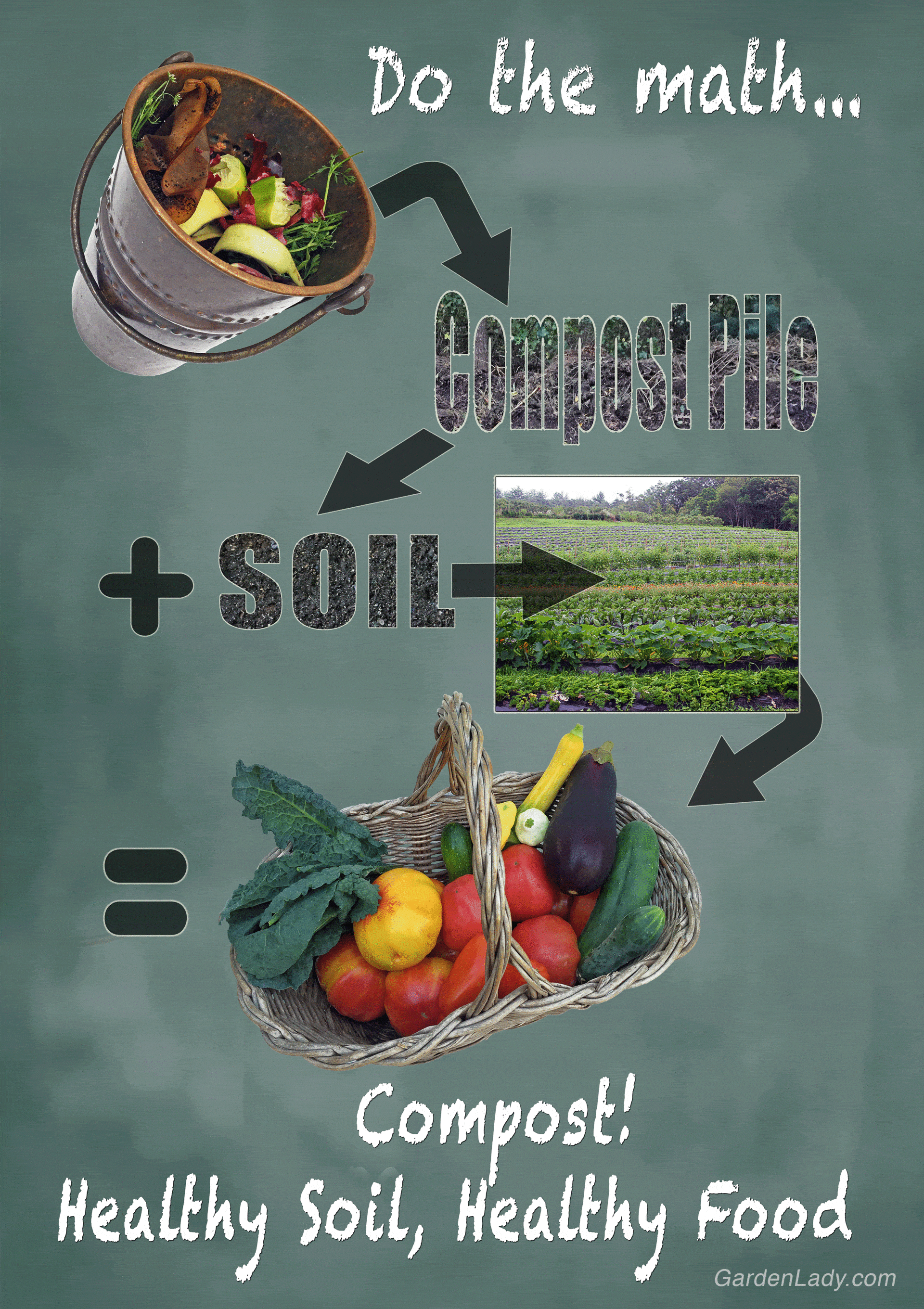People often ask about fertilizing in the spring, but many ignore how Nature fertilizes and amends soil. There is no little Fertilizer Fairy flitting around the woods and fields pouring blue liquids or time-release pellets. Nature amends soil, and fertilizes, by organic matter that rots from the top down. So why don’t we gardeners take a hint?
One of the best things you can do in the spring is to amend your existing plantings by spreading compost. Be it your own homemade compost, composted manure or bulk/bag compost purchased at your local garden center. An inch is enough and you can spread it any time. But if you want to fertilize with an organic fertilizer, a good system is to first sprinkle the fertilizer and then top with the inch of compost. For those who want to mulch, an inch or two (at most – more is not better) of mulch can be spread on top of the compost or composted manure.
You’ll be amazed at how well your plants respond.
If you’re growing veggies, apply an inch or two of compost on top of the soil. Those who are using the no-till method will leave this as is, and plant at the appropriate time. Those who turn the soil every spring will till that compost or manure under. Either way, it’s a win-win.
It’s not sexy, and it takes some amount of lifting and raking, but when we use the same methods Nature does, our gardens thrive. So it’s worth it.


CL,
I do not have a question about the above interesting article on compost and healthy soil but I hope you do not mind if I ask you another question.
In the fall, you gave me good advise about when to bring in my clematis and how to care for it this winter. Initially, it lost all its leaves and I was about to throw it out when I saw little buds……long story short, it has come back and thrived all winter except I have not had any flowers. I wonder if this is normal or not. Also, when should I move it outside again this spring and what care should I give it once it is outside. Thanks for your help.
It’s completely normal that this plant didn’t boom indoors – it’s an outside plant. But since its growth is accelerated due to being inside, you can’t put it out until late May. Use the night-time temps as your guide – once you see that the long range forecast is for night temperatures of 50 and above, put it out, first in the shade, then moving to part sun, and then to full sun. Fertilize with the fertilizer of your choice used according to directions. Water when dry.